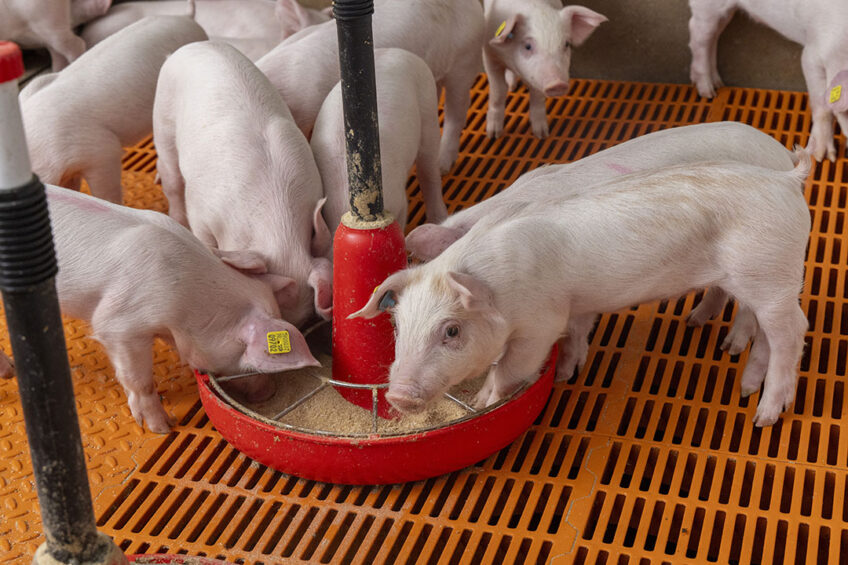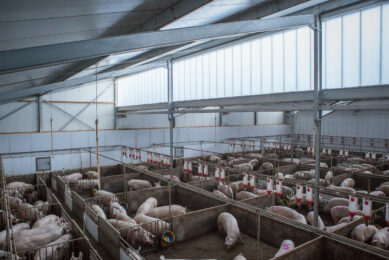Does access to open areas improve piglet welfare?

Researchers from India evaluated the impact of access to open area on piglets’ performance and welfare during summer.
A lack of sweat glands and a thick subcutaneous fat layer increases piglets’ susceptibility to heat stress. This compromises health, welfare, performance, and productivity. In order to find out the impact of open areas on piglets’ welfare, the researchers selected 20 piglets (10 castrated male and 10 females) of 3 months of age for their trial. Each pen had a covered and open area with a flat type reinforced concrete floor with a slope towards an open area.
The team randomly distributed the piglets into 2 housing treatment groups, either with access to a covered area with a floor space allowance of 0.9 m2 per piglet or with access to covered and open areas with a total floor area of 1.8 m2 per piglet. They calculated the daily maximum and minimum temperature, relative humidity, and temperature humidity index for the day and different fortnights. In addition to that, they recorded bodyweight, body temperature, and daily feed intake, as well as calculating weight gain, protein and energy intake, feed conversion ratio, protein efficiency ratio, and energy efficiency ratio.
The researchers assessed the piglets’ welfare based on physiological, behavioural and biochemical changes. They scored skin and hoof lesions to assess the level of physical injury. Behavioural activities and resting preference of pigs were recorded 3 times for each pig in each pen. The team avluated biochemical changes including glucose, glycerides, cortisol, total protein, albumin, BUN, creatinine, SGPT and SGOT, using blood samples.
Microclimate profile during experiment
Thermo-neutral temperature for growing pigs ranges from 18 to 25 °C. In this study however, the minimum and maximum temperature ranged between 18.49-28.90 °C and 24.65-34.94 °C. In addition, for pigs weighing over 30 kg in the thermal comfort zone, optimum range of relative humidity varies between 50-70 %. In this study, the minimum relative humidity ranged from 30.80% to 50.87% and maximum relative humidity in pens varied from 56.06 % to 74.69%.
Access to the open area did not impact feed conversion ratio and protein efficiency ratio over different fortnights
Growth performance
The average body weight did not differ between piglets that had access to only a covered area and piglets that had access to both covered and open areas. The average daily weight gain in both groups increased up to 5 months of age and subsequently decreased between 5.5-6.0 months of age. In addition, piglets with access to only a covered area had a higher daily feed intake, protein, and energy intake over different fortnights up to 5 months of age. Access to the open area did not impact feed conversion ratio and protein efficiency ratio over different fortnights. However, the energy efficiency ratio of piglets with access to open area was significantly better only during 1st fortnight, 5.5months of age and between 5.5-6.0 month of age.
Physiological change
Body temperature and respiration rate of piglets in both groups increased over the fortnights. The team attributed this to increased susceptibility to heat stress with age and a corresponding increase in environmental temperature humidity index of experimental pens.
Behavioural changes
Access to an open area did not impact urination, defecation, drinking, and playful activities including running, walking, and rubbing. It also did not impact the frequency of total agonistic and exploratory activities, and the frequency of head, limb, tail, and hoof lesions. However, only between 5.5-6.0 months of age, the total resting and feeding times were higher in piglets with access to an open area.
Biochemical response
Access to open area did not impact plasma biochemicals including glucose, triglycerides, NEFA, total protein and albumin. The authors concluded that “provision of an open area as suggested in Indian standards (1966) for pig housing had no beneficial effect on growth performance and welfare, so provision of open area can be removed in open sided pens in tropical Indian conditions with simultaneous reduction of cost of production through reducing investment on housing in intensive pig production.”











